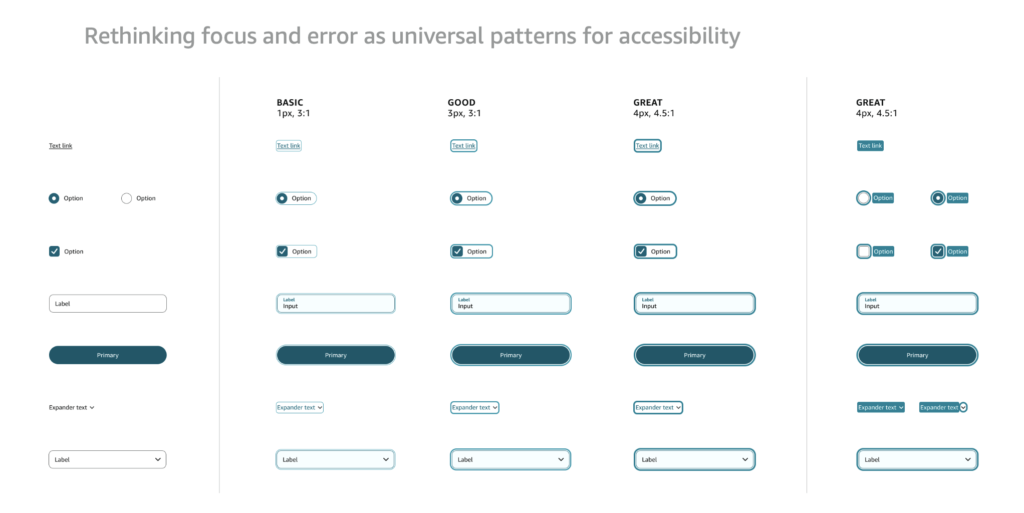Amazon Rio Design System
2020-2021

The Amazon Rio Design System emerged as a pivotal innovation in Amazon’s digital ecosystem, representing a comprehensive approach to store-wide design that transcends traditional interface development. As a holistic design framework, Rio was conceived to ensure quality, cohesiveness, and scalability across Amazon’s vast digital shopping experience.
Strategic design philosophy
Rio was built on a foundational principle of creating a dynamic, living design system that could adapt while maintaining core Amazon design DNA. The “unless you know better” approach embodied a philosophy of continuous evolution, balancing flexibility with foundational consistency. This approach ensured that while the system could adapt, customers would always recognize the quintessential Amazon shopping experience.
Foundations
The design system was meticulously constructed around core design elements: 1) Color palettes 2) Typography 3) Spacing guidelines 4) Shape specifications 5) Elevation principles and 6) Iconography. Each foundation was carefully crafted to create a unified visual language that immediately communicates the Amazon brand across diverse technological platforms and interfaces.
Components and patterns
Beyond foundational elements, Rio developed pre-built UI components and shopping patterns that could be consistently applied across Amazon shopping. From buttons and checkboxes to complex shopping interactions, these components ensured a coherent and predictable customer experience with top-notch accessibility and documentation.
Experimental innovations
Between 2020-2021, Rio drove significant visual modernization of Amazon’s store-wide experience. The team’s experimental approach yielded remarkable results:
- Generated nine-figures in global Gross Consolidated Contribution Profit (GCCP)
- Conducted extensive customer perception research
- Dramatically improved our net promoter score from -26 to +7

Sentiment and perception breakthrough
The design system’s evolution was reflected in dramatic shifts in perception:
- Innovative design system perception increased from 20% to 61%
- Team support perception rose from 42% to 78%
- Perception of continuous improvement jumped from 31% to 77%
Component library development
Recognizing gaps in existing UI libraries, I proposed the development of “RiCo” (Rio Component Library), creating a new comprehensive solution where only partial implementations previously existed (i.e., desktop/mobile). This involved writing detailed PRFAQs, securing engineering funding, and defining product milestones.
Team growth and development
The team’s growth was strategic and impactful: I hired 66% of team, recruited 10 ICs across Seattle, San Francisco, and New York, and managed diverse teams including UX, Program Managers, and Design Technologists.
Accessibility and research focus
A critical component of Rio’s mission was advancing accessibility and conducting rigorous research. The team secured investments in quantitative analysis through weblabs (A/B testing), best-in-class accessibility improvements and deep product research.

Benefits and business impact
Rio’s design system delivered transformative benefits by creating a more cohesive, trustworthy shopping experience. Reduced design, coordination and engineering costs. Standardized design decisions across core shopping surfaces. Accelerated innovation by providing ready-made design elements and leveraged customer-tested designs with proven business impact to evolve the system. By November 2023, Rio’s experiments had collectively generated nine-figures in worldwide gross consolidated contribution profit (GCCP).
Legacy and future vision
The Amazon Rio Design System represents more than a technological achievement. It’s a testament to the power of strategic design thinking, demonstrating how a thoughtful, adaptive approach can transform digital experiences and drive significant business value.
To the innovative team members who reimagined digital design, challenged conventions, and created a living, breathing design ecosystem—this journey was a collective triumph of creativity, strategy, and user-centric innovation.